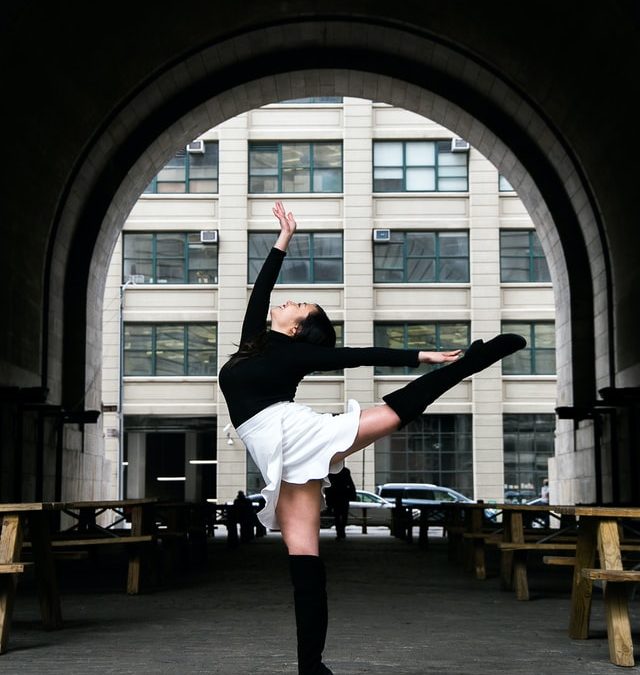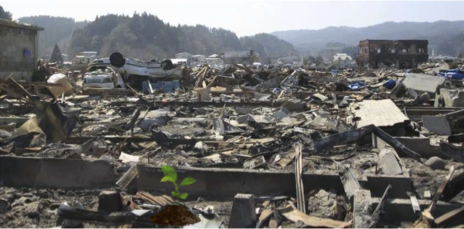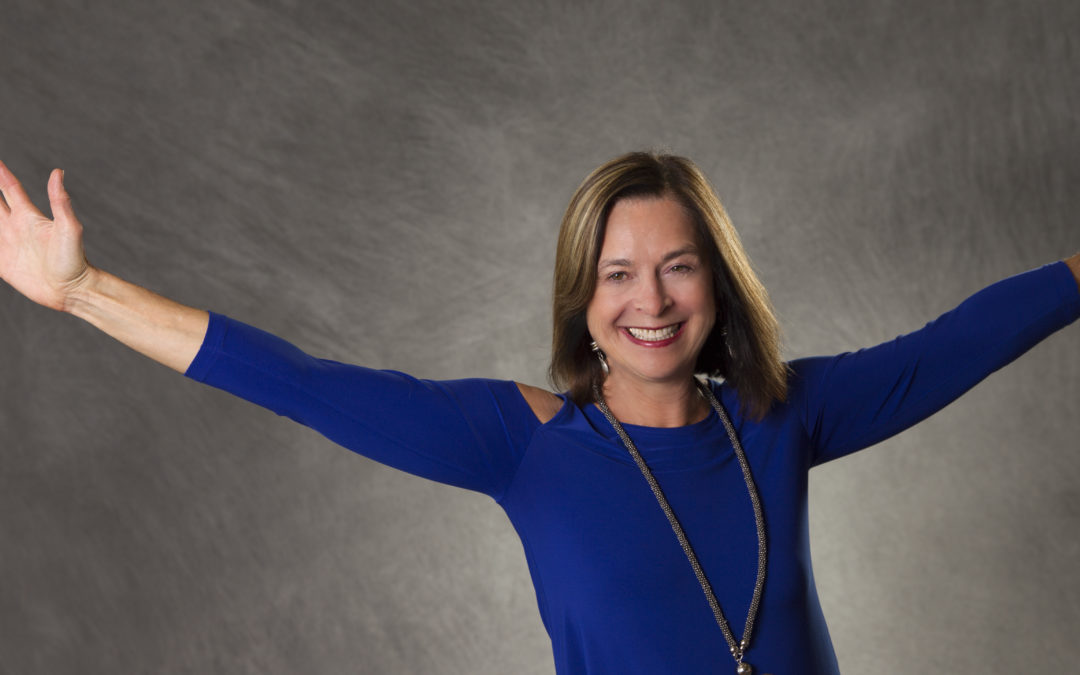
by pam | Jun 2, 2020 | Dealing with Stress, Leadership, Organizational Change, Preventing Burnout, Self-Care, Women in Business
Many people are talking about the “new normal” and what our lives will look like after COVID-19. Rather than returning to old beliefs, systems and ways of working, I view this time as an opportunity to internalize new beliefs, create new systems and ways of working, building on the lessons learned so far and based on the vision of a world that works for everyone.
One area that I feel strongly about is Work-Life Balance. Having almost burnt out several times in my life I know what it is like to feel SOoo tired and to push through fatigue to finish that one last “thing”, instead of listening to my body and taking a break. I’ve also witnessed younger and younger women clients losing their passion and burning out. Perhaps you relate.
Did you know that burnout is reaching epidemic proportions worldwide?
In May of 2019, the World Health Organization (WHO) revised its classification of burnout from a medical condition to an occupational phenomenon. Their definition:
“Burn-out is a syndrome conceptualized as resulting from chronic workplace stress that has not been successfully managed. It is characterized by three dimensions:
- feelings of energy depletion or exhaustion;
- increased mental distance from one’s job, or feelings of negativism or cynicism related to one’s job; and
- reduced professional efficacy.” [1]
The importance of this change in the WHO classification is that it acknowledges that organizations and their leaders have a role to play in reducing workplace stress; rather than burnout being perceived as a personal medical issue, a sign of weakness and something to be hidden and ashamed of.
To learn more about how to know if you’re burning out and what to do about it see: https://pamela-thompson.com/how-to-know-if-youre-burning-out-what-to-do-about-it/
Work-Life Balance
When you think about work-life balance what thoughts or feelings come up for you? You may have negative feelings about the term and believe it isn’t possible OR you may dream of living a life where you no longer are feeling there is so much to do and so little time but instead are feeling healthy, happy and fulfilled.
For me, work-life balance is both personal and elusive. Personal, because what work-life balance looks and feels like for me is different from what work-life balance looks and feels like for you. Elusive because many people speak about work-life balance and yet few are able to achieve or maintain it.
How can you as a leader integrate work-life balance into your own life and model it for others in the workplace? Here are some “tried and true” strategies:
Personally:
- Count up the number of hours you typically work in a week. Is it more than 50? (Obviously sometimes)
- Make a commitment to reduce the number of hours you typically work weekly (choose a realistic number to begin with)
- Experiment with a work week when you reduce your hours. Then notice how you feel. You may wish to journal about it
- Make a clear differentiation between work and home time. For example, before leaving work say to yourself, I am now leaving work behind, or pick a point on your drive or walk home where you make a conscious choice to release work and step into “your” time
- Begin incorporating mindfulness practices into your personal life; e.g.
- on awakening while lying in bed do a body scan from the top of your head to the bottom of your feet noticing any tension, discomfort, heaviness. Breathe into those areas of tension, discomfort or heaviness and set the intention to release and let go of them.
- Start doing mindfulness walking meditations 3 times/week for 30 minutes each time.[2] Some of my clients do this at lunch hour. Others after work. Notice how you feel before, during and after. Is there a cumulative effect?
- Schedule blocks of time in your calendar for you (e.g. work out at the gym, yoga class, lunch with a friend, concert with your partner)
- Unplug at least 90 minutes before retiring and encourage your colleagues to do the same.
Organizationally:
- At work, encourage people to take breaks
- Set clear expectations with your direct reports and colleagues related to NOT checking emails and answering texts on evenings and weekends. Share with them the importance of them taking time for themselves and their families
- Have short meetings (up to 60 minutes max) with clearly defined agendas, and expectations so people know why they’re there, how to prepare and the expected results
- Encourage people to take lunch breaks
- Support people to take regular vacations and to NOT check their emails while on vacation (set up a buddy system so staff and managers can feel that the key aspects of their positions are being covered while they are away)
- Have yoga classes and/or a gym on site and participate in the classes/use the facilities yourself.
What strategies have you found helpful to create more balance in your life on a personal level and if you have a team, on an organizational level? I welcome your comments and suggestions below. Feel free to share this post with others.
*updated from May 2, 2016 blog post
[1] https://www.who.int/mental_health/evidence/burn-out/en/
[2] A tool from Easter psychology that I have found extremely useful for getting “out of my head” and into my body is Mindfulness Walking Meditation. Mindfulness practices focus on the senses and feeling sensations and emotions in our bodies. When we do a mindfulness walking meditation, we feel the ground beneath our feet, we feel the breeze against our face, we feel the cool air going from our nostrils down into our lungs. We smell the scent of salt or the aroma of lavender in the air and observe the scenery in front of us. We try to stay out of our minds and experience our senses. Rather than spend a walk in nature constantly thinking and processing all the things we have to do, instead we stay present and experience nature and all of its beautiful sights, smells, sounds and sensations.

by pam | Mar 26, 2020 | Change, Creative Living, Dealing with Uncertainty, Embracing Change, Women in Business
I believe that embracing change is a creative process
that opens us up to new possibilities.
During these uncertain and
challenging times it may seem counterintuitive to think about change and
creativity together in the same sound bite. That said, believe it or not, this
is the opportune time for you to tap into
and express your creative side.
I encourage you to sit down,
close your eyes and take a few moments to pause and reflect. Ask yourself, what positive changes have come out of this
pandemic for you, your relationships, your community, your business, your work?
For many, it is the
opportunity for the first time to work from home. If this is you, it may be an
enjoyable and productive experience; or it may make you realize that being on
your own, you miss the camaraderie of colleagues, easily get distracted, and
find it challenging to get work done. This is a gift, as now you know that
working on your own at home is not a preferred option for you.
For others who own their own
businesses, initially you may have experienced fear and have had to “let go” of
some of your employees, and yet when you “go inside”, you realize that your
business is not exciting you anymore and hasn’t for some time. You may have
been feeling uninspired but didn’t know how you could exist and earn a living
without your “tried and true” business or job. This is a time to experiment
with different ways of running your existing business. It is a time ripe for innovation.
Now you have the opportunity
to explore what “lights you up” (see https://pamela-thompson.com/believe-that-you-are-here-to-make-a-difference/ for an exercise on how to identify your passions),
and to clarify your core values (refer to https://pamela-thompson.com/do-you-live-in-alignment-with-your-core-values/ for more details), so that when you return to a “new
normal” , whatever that looks like, you will be in a position to reinvent
yourself , whether it be to find that job of your dreams or start that new
business you’ve been putting off for some time, perhaps years.
What about key relationships in your life? What realizations has this time of social distancing “brought up” for you? It could be the conscious awareness that connection and regularly speaking with friends and family is really important for you. I’ve found that I want to call and FaceTime or Skype with close friends, rather than text or email them. I feel a strong need to be in community. Fortunately, I am part of a Women’s Circle that meets face-to-face every 2 weeks. We met via Zoom for the first time this past week, were creative with our process, and it worked really well. A fun and creative activity my husband and I have planned for this evening is a virtual birthday party for one of our young granddaughters.
A tool I’ve found helpful
during these times is journalling using writing prompts such as: What is the silver lining in this
experience? Have my priorities changed? What is most important to me? How can I
change my life so each day I focus on those things and people that are most
important to me?
I invite you to begin meditating daily if this is a new experience for you and/or something you’ve been “putting off” and meaning to do for a while. I find Deepak and Oprah’s free 21-day Meditation Experiences (e.g. Finding Hope in Uncertain Times – https://chopracentermeditation.com/store/product/156/hope_in_uncertain_times_streaming); extremely helpful to ground me and keep me focussed on the positive during these times of massive change and uncertainty.
It is important to express your feelings during challenging
times. Drawing and/or painting may be helpful for you to release negative
feelings and to create positive “pieces”; paintings or drawings that remind you
of hope, connection, and people and activities that bring you joy and connect
you with your inner child.
Visioning is
another tool to create possibilities out of the current chaos and uncertainty. Ask
yourself, What do I want the world to
look like after this pandemic? Do I see more people aware of climate change
and the actions we all can take to protect animals and improve the environment?
What is my role in this? What actions can
I take toward making this world a better place for my family, community,
workplace …?
Do you envision a community where you are connected to your neighbors and have mechanisms in place to enable you to be kept aware of and able to respond to those closeby who are in need?
“I
believe that humanity is essentially good and
that we are all interconnected
I
believe that everything happens for a reason.
The
Universe provides me with what I need
And
Great Spirit is guiding me toward fulfillment.
Nature
connects me with my soul.
I
believe that life is an adventure to be lived to the fullest and that I am here to help build peace in the world.”
(excerpt from “Learning to
Dance with Life” my #1 best selling book, p. 6)
What do you believe? …
What opportunities have presented themselves/are appearing for you in these uncertain and chaotic times?
How are you tapping into and expressing your creative side?
I invite and welcome your thoughts and comments below.

by pam | Mar 10, 2020 | Change, Changemaker, Leadership, Women in Business
There’s been a lot of talk in
recent years about women “being the change” we want to see in the world. Yet how do you “be the change” in your
day-to-day life? Here are a few thoughts that I hope will stimulate some of
your own.
How can we be the change we want to see in our homes?
- By choosing to share household responsibilities with our partners such as cooking, cleaning, yard work … and modelling these choices for our children
- Teaching our boys as well as our girls to cook, clean, do the dishes …
- Teaching our girls as well as our boys to mow lawns, shovel snow …
- Becoming financially literate. By this I mean “ … the possession of the set of skills and knowledge that allows an individual to make informed and effective decisions with all of their financial resources” (Source – Wikipedia; ) and ” … the ability to understand and effectively apply various financial skills, including personal financial management, budgeting, and investing. Financial literacy helps individuals become self-sufficient so that they can achieve financial stability.” (Source – https://www.investopedia.com/terms/f/financial-literacy.asp)
- Teaching our children financial literacy.
How can we be the change we want to see in our
communities?
- By identifying an issue we are passionate about and initiating
a project/program to make a difference in this issue (e.g. nutritious school meal
programs; animal welfare; homelessness)
- By identifying an existing group or organization that
is championing an issue we feel passionate about and contributing our relevant
knowledge, skills and/or our financial resources to that organization or group.
How can we be the change we want to see in our work?
- If we see issues we feel strongly about that are not
being handled effectively in our workplaces (e.g. gender inequality, need for
diversity training … ), we may observe and collect data to support our case and
identify others within the setting to support us to make a case to management.
- If we own our own businesses we may choose to donate
our time and/or money to an organization whose work we value (such as a group
that is pro zero waste, sustainability, women’s rights … )
- If we own our own businesses we may choose to develop
and offer workshops and keynotes to public and private sector organizations on
topics of interest and expertise such as: diversity and inclusion training,
change management, feminine leadership.
Now, over to you. What suggestions do you have for how you and
others can “be the change” you want to see in your households, communities,
workplaces …?
I welcome your comments
below.

by pam | Feb 9, 2020 | Conscious Living, Entrepreneurship, Preventing Burnout, Self-Care, Stress Management, Women in Business
Did you end 2019
feeling exhausted and burnt out? Did you set the intention that this year would
be different, that you would take more time for you and to spend with friends
and family? Are you finding that already you are slipping back into old
patterns of taking work home in the evenings and working on weekends?
I understand. I’ve been there. Early in my childhood I
internalized the belief that in order to be loved and valued I needed to
perform and achieve. And so I kept doing that. Setting one goal, reaching it;
then raising the bar and striving for the next one. Taking very little, if any
time, between my accomplishments to celebrate; until I became exhausted and
burned out.
What happens when we
are driving and striving?
- Our agendas are packed
- We have little or no time for ourselves
- When we are speaking with someone, often half of
our brain is focused on them and the other half is focused on the next thing on
our to-do list
- We feel like there is so much to do and so
little time
- We focus on our goals and become so fixated on
achieving them that we may miss out on other opportunities that come our way
- We often feel tired on awakening
- We may start to feel resentful, as we seem to be
giving to everyone else, yet no one seems to be there to support us when we
need it.
Do you relate? Living this way, constantly driving and striving, leads to adrenal fatigue, burnout, various types of cancer, and auto-immune disorders such as fibromyalgia and multiple sclerosis (for more details on burnout and what to do about it – https://pamela-thompson.com/how-to-know-if-youre-burning-out-what-to-do-about-it/). When we work night and day, our bodies don’t have time to return to homeostasis where we relax and rejuvenate ourselves. As stress hormones constantly surge through us, our organs eventually burn out.
What does thriving
look and feel like?
- We feel happy, healthy and grounded with a balance
between “giving” and “receiving” and “doing” and “being”
- We feel open to possibilities
- We awaken feeling energized and excited about
the day ahead
- We spend time with people we care about
- We feel connected to something greater than
ourselves
- We spend regular time in nature
- We exercise regularly
- We are grateful for the life we have
- We are clear on our core values and live life in
alignment with them.
Feel free to add your own descriptions to the lists above.
How do we move from
driving and striving to thriving?
- We learn to Listen
to and trust in our body’s wisdom – The first step in getting out of our
heads and into our bodies is a mindfulness technique called body scanning. On awakening, you begin
scanning your body from the top of your head to the tips of your toes and
noticing where there is any tension or discomfort. Then you breathe into these
areas and set the intention to release any discomfort. Another mindfulness
practice is mindfulness walking meditations.
I encourage my clients to begin doing this 15 to 20 minutes a day, 3 times
a week. It can be done at noon or during a break. Instead of taking a walk and
thinking about the next thing on your plate or reflecting on a stressful
conversation you had with a partner or team member, you focus on your senses.
You feel the wind on your cheeks, you smell the salt sea air, you hear the
birds singing, you see the beautiful vistas surrounding you. When thoughts come
into your mind you view them as clouds floating by and let them pass, returning
to focusing on one of your senses. When you do this, notice what you notice
during the exercise, after and the cumulative effects.
- When you are feeling stressed, Take deep breaths in through your nose and
out through your mouth; making a sound as you breathe out. When you do this
3 or 4 times you release oxytocin, a hormone that relaxes you.
- Each week
block off in your calendar all of the things you commit to doing for yourself
(that you enjoy). For me one of these is yoga 3 times a week at noon. It
may be going to the gym 3 of 4 times a week after work. It may be meeting a
friend or partner for lunch once a week.
- Set firm
boundaries. Learn to say no. This is important at work, and with family and
friends.
- Notice
your energy levels and schedule your activities to capitalize on these. For
example, if possible, do your creative work when you are naturally more
creative. Schedule meetings after 10 am.
- Spend regular time in nature; walking, hiking, cycling, kayaking … . Nature is therapeutic. Based on several decades of research, the Japanese have evidence to show that forest bathing/walking among trees reduces your heart rate, reduces your blood pressure and increases the number of natural killer cells your body produces. For more on the benefits of being in nature check out: https://pamela-thompson.com/how-you-can-benefit-from-nature-why-its-important/
- Unplug
from technology for at least 24 hours one day a week (e.g. on weekends) if
possible
- Celebrate
your achievements, big and small.
It’s important to reach out for support to friends, family
or a coach, as moving from driving and striving to thriving, IS a journey and
it requires support from others.
For more practical tools and techniques to support you to be healthy, happy and grounded, I invite you to check out my book Learning to Dance with Life: A Guide for High Achieving Women – www.amazon.com/dp/B0145ZGDO2 that is backed up by evidence from neuroscience, eastern psychology and the health promoting and healing benefits of the arts. There is also a series of coaching questions woven throughout the book to support you to move from driving and striving to thriving.
I welcome strategies that you’ve found helpful in the comments below.

by PT-clc | Jan 12, 2020 | Changemaker, Embracing Change, LeadinginUncertainTimes, Women in Business
A new year holds promise and also brings with it
uncertainty.
How do you respond to
uncertainty as a leader and changemaker? Do you typically greet it with
open arms, or hide from it pretending you have all the answers, as you feel
uncomfortable not knowing the outcomes.
What happens when you
approach uncertainty believing you have all the answers? You may set goals
and push through to accomplish them, focusing mainly on the metrics, without
taking into consideration your people and an intervention’s impact on your
organization and its culture. You may miss out on opportunities and creative
solutions that can arise from uncertain situations.
To illustrate what
happens when we greet uncertainty with open arms …
One of the things I’ve enjoyed about working in international health and development is the uncertainty, and with that, the opportunities for new and creative solutions, that present themselves. For example, when I was working in Afghanistan about 10 years ago as a Senior Technical Advisor in Planning and Performance Measurement, I met with the Minister the second day of my 9-month contract. At that time, she shared that although their original plan was to hire a policy and a planning advisor, since I had some experience with policy that she wanted me, within the first month, to give her a report of my impressions of her Ministry’s policy development and planning processes and what recommendations I would offer to improve them. This, on top of the tight timeframe I had to work with her folks to develop the Ministry’s first strategic plan and build their capacity in planning!
I went back to my office and asked the Afghan physician and policy advisor who sat beside me, if he had an org chart of the Ministry in English. He said “no” but he had one in local language. He printed one out for me and I asked him to tell me which departments were in the 15 boxes below the Minister and Deputies and the names of each Director while at the same time writing them all in English on the chart. Then I asked if he would take me to each one of their offices and introduce me to them (a few at a time).
At that time, I shared with each person that I would appreciate the opportunity to meet with them for 1 to 1.5 hours over the next day or so, and asked if there was a time that would work for them. I then followed up with the interview questions by email, which I quickly formulated. Within a month I had interviewed the top 15 department heads, rolled up in a report for the Minister what THEY perceived where the key strengths and weaknesses in their policy development and planning processes, their suggestions for improvement and added my own recommendations. In addition to learning a lot about how policy development, implementation and planning was done at the Ministry, I also had met one-on-one with 15 influential leaders in the organization, which served me well in the coming months.
If I had planned the above scenario in advance, it couldn’t
have worked out better!
What ingredients are
required of leaders and changemakers so we can more effectively deal with
uncertainty and embrace it?
I believe the following are important in this complex and
rapidly changing world we live and work in:
- Authenticity
– Acknowledging that you do not have all the answers or aren’t sure what to do.
- Flexibility
– Creating opportunities to reflect, and the ability to change direction during
a process that has an uncertain outcome (e.g. culture change process) .
- Emotional
Intelligence – Recognizing your own strengths and weaknesses, surrounding
yourself with a team that has complementary skills and personality traits to
yours, inviting their thoughts and suggestions, and truly listening to what
they have to say.
- Process
Understanding and Inclusive Orientation – Valuing a facilitated process
that encourages different voices to be heard and supports diversity.
- Openness
to new ideas – Inviting creative ideas and listening to what people are saying;
(e.g. providing opportunities to encourage people to tap into and express their
creative sides).
- Trust
that everything will work out. Chaos theory has demonstrated that order
comes out chaos.
Uncertainty conjures up fear in many of us; however if we greet it with open arms and include the ingredients above, incredible opportunities and solutions are possible!
How do you embrace uncertainty? I invite your thoughts below.

by PT-clc | Nov 12, 2019 | Changemaker, Dealing with Stress, Healthy Organizations, High Achieving Women, Leadership, Stress Management, Women in Business
Do you feel like there
are never enough hours in the day? Do you crave guilt-free time with family and
friends without that “to-do” list nagging you in the back of your brain? Do you
long for some time for you, to just “be”?
I understand. I’ve been where you are. In December 2012, I
almost burnt out. I had been working on a one-year contract with a non-profit
that promotes women’s and children’s rights around the world. When the
opportunity came my way, I was excited as I felt so aligned with their mission
and values.
As I flew to several African countries for project start-up,
I felt energized and passionate; excited to meet the teams on the ground and
learn about their needs and how I might be of support. 6 months in, I started
to feel SOoo tired and that there was so much to do and so little time. Do you relate?
I was initially hired to be a Senior Health Advisor on 5
projects in Asia and Africa to reduce infant and maternal mortality. That
morphed to 7 projects in 7 countries. I was initially to be a member of a
multi-stakeholder working group of four non-profits that had received a large
amount of donor funding to hire a research institute to evaluate the combined
impact of all of our projects in Asia and Africa. Within a month of starting
the position, I was informed that I was the Chair of that working group. The
Chairperson position became almost a full-time job on its own.
I was working night and day feeling so committed to what I
was doing and wanting to do the best job I could. Near the end of the contract
the non-profit invited me to stay on for another 6 months in a reduced role, 2
days a week chairing the multi-stakeholder working group. I was close to
signing the new contract and asked to sleep on the decision. I awoke the next
morning feeling like a lemon that had been squeezed dry. In that moment I knew
that I finally had to listen to my body and take a break. So I turned down the
opportunity. The VP and Director I’d been working with were shocked and asked
me why. I said “because I want to create more balance in my life”. At the time
I had no idea what that meant or what my life would look like but, but I
started 2013 with no work on my plate, committed to reconnecting with family
and friends and spending a lot of time in nature. I studied mindfulness,
started to meditate daily and continued with regular yoga practice. I slept 10,
12, 13 hours a night and after 4 months was still tired. So I went to a naturopath
who put me on some homeopathic meds and within a month or so I started to get
my energy back and feel more like myself.
About 5 months in, the 7 keys to what I call Creative Living; 7 keys to consciously
cultivating improved health, happiness, fulfillment and inner peace in your
life, came to me. I then began writing my first book “Learning
to Dance with Life: A Guide for High Achieving Women” which made #1 on
Amazon on launch day. It is a guide for women, as well as men, who constantly
“give” and “do” out of balance with “receiving” and “being”.
Burnout and adrenal fatigue are reaching epidemic
proportions. In May of 2019, the World Health Organization (WHO) revised its
classification of burnout from a medical
condition to an occupational
phenomenon. Their definition:
“Burn-out is a syndrome
conceptualized as resulting from chronic workplace stress that has not been
successfully managed. It is characterized by three dimensions:
- feelings of energy depletion or exhaustion;
- increased mental distance from one’s job, or feelings of negativism or cynicism related to one’s job; and
- reduced professional efficacy. ” [1]
The importance of this change in the WHO classification is
that it acknowledges that organizations and their leaders have a role to play
in reducing workplace stress; rather than burnout being perceived as a personal
medical issue, a sign of weakness and something to be hidden and ashamed of.
To learn more about burnout, its symptoms and causes see: https://pamela-thompson.com/how-to-know-if-youre-burning-out-what-to-do-about-it/
Proven Strategies and Powerful Practices
How can we as leaders
and changemakers turn this epidemic around? It starts with us, and our own lives. Here are
a few strategies I’ve personally found effective and have shared with coaching
and consulting clients around the world.
- Integrate mindfulness practices into your life daily. Mindfulness practices help us get out of our heads and into our bodies. They originate from Buddhism. Body scanning is a good place to start. Each morning on awakening scan your body from the top of your head to the tips of your toes. Notice any areas of tension or discomfort. Breathe into those areas and release them. Imagine them flowing out of your body. Mindfulness walking meditations are another practice. I recommend initially doing these 3 times a week for 15 to 20 minutes a day; for example, at a lunch break or immediately after work. Ideally do this outdoors in a park or in nature if possible. Focus on all of your senses. Hear the crunch of leaves underfoot, smell the salty sea air, view the beautiful vistas surrounding you, feel the wind on her cheeks. When thoughts come in to your head, imagine they are clouds. Let them drift by and resume focusing on all of your senses. Notice what you notice during the walking meditations and after.
- Listen to
and Trust in Your Body’s Wisdom. This is one of the 7 keys in my book. What
I know to be true is that our bodies always know the truth. Many of us were
raised in cultures that value and focus on our rational, logical left brain and
staying in our heads. Mindfulness practices help us get back into our bodies,
and learn to listen to and trust them. Try something as simple as when you feel
tired, go to sleep rather than pushing through that last task before heading to
bed. When a decision doesn’t feel right, try going with your gut rather than
rationalizing a decision. For more tools that assist you to learn to make
decisions using your body’s wisdom check out chapter 4 in Learning to Dance with Life.
- Tap into
and Express Your Creative Side. Is
there something you enjoy doing that when you do it you become immersed in it
and lose track of time? Could be film editing, painting, writing,
gardening, cooking … . Chances are when you have this experience, it is one of
your passions, and when you tune into it you are tapping into your creative
right brain. Usually you feel energized and positive while engaging in a
passion. When you are filled with childlike wonder you also get out of your
head and into your body. Regularly taking time to do something you enjoy that
is creative helps reduce the stress in your body and takes your mind off work.
- When you feel stressed Deep breathe in through your nose and out through your mouth consciously
making a noise on the out breath. Do this about three times and notice what
you notice. This practice stimulates the release of the hormone oxytocin that
relaxes us and makes us feel good.
- Set firm
boundaries; i.e. learn to say “no”. In order to do this it is helpful to
clarify your core values (For more info
on values see https://pamela-thompson.com/do-you-live-in-alignment-with-your-core-values/)
– and ask yourself: Is this activity or
this organization in alignment with my top 5 core values? Another
question to ask is: Will this activity
bring me joy? Do I have time to add this activity to my plate?
- Celebrate
successes – big and small. Rather than checking a completed project or key
activity off your list and quickly moving onto the next, take time to celebrate
it with yourself and with other special people in your life. This can be as
simple as taking a moment to go inside yourself and acknowledging the work
you’ve done and feeling good about what you’ve accomplished. It could be
treating yourself to a massage, bubble bath or pedicure or going out for a
special dinner with a friend or partner.
I invite you to commit to integrating two or three of the above strategies into your life starting tomorrow. If you would like to learn more about how to stay happy, healthy and grounded while being successful in life and business check out my book Learning to Dance with Life – www.amazon.com/dp/B0145ZGDO2 – which is backed up by evidence from neuroscience, eastern psychology and the health-promoting and healing benefits of the arts.
I welcome your
experiences and comments below. What strategies have you found successful in
reducing work-related stress?
[1] https://www.who.int/mental_health/evidence/burn-out/en/





